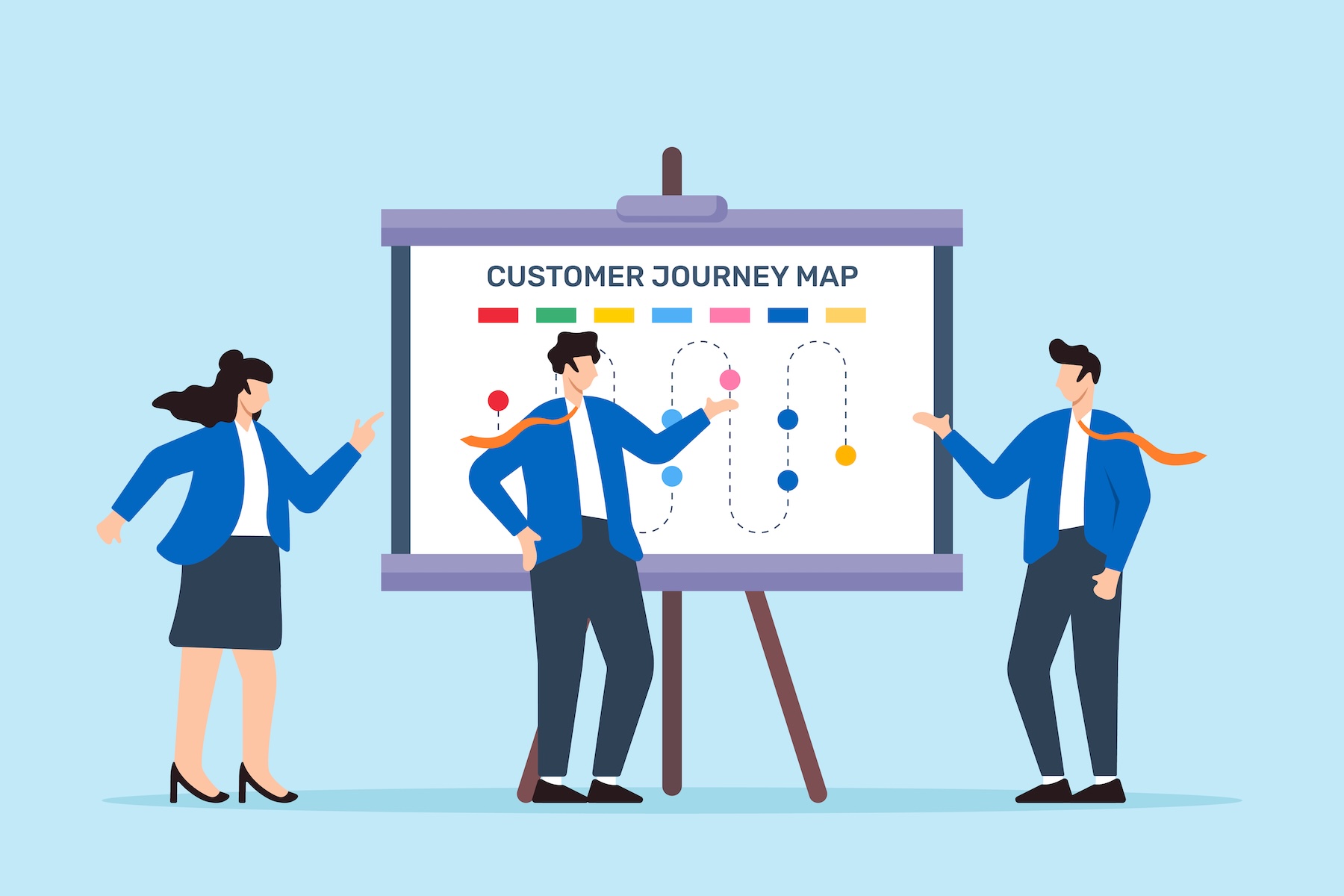Creating a website that seamlessly guides visitors from discovery to action is key to converting clicks into loyal clients. The “user journey” on a website is the path that users take from landing on a page to achieving their intended goal, like signing up for a newsletter or making a purchase. By structuring this journey thoughtfully, you can create a site experience that is both engaging and effective. Here’s how to build a user journey that makes your site intuitive, enjoyable, and successful in turning visitors into customers.
Step 1: Start with a Strong First Impression
The homepage is your digital welcome mat. Users often decide within seconds whether to stay or leave based on their initial impression, so clarity and simplicity are key. Make sure your homepage quickly communicates your brand’s value and primary message. Keep content concise, use high-quality visuals, and display your logo and key messaging prominently.
A powerful call-to-action (CTA), like “Learn More” or “Shop Now,” should be visible on the homepage to guide users into their next step. Consider adding social proof, such as testimonials or reviews, to establish credibility and build trust right from the start.
Step 2: Streamline Navigation for an Easy Flow
An intuitive navigation system is essential to keep users moving through the site. Use simple, clear labels for each menu item, and avoid overcrowding the menu with too many options. Ideally, users should be able to reach any main section of your site in three clicks or less.
Use a “breadcrumb” navigation bar on internal pages to let users know where they are and how to navigate back if needed. This subtle detail adds a sense of direction and reduces frustration, especially on multi-page sites.
Step 3: Create Engaging and Relevant Content
Content is a major factor in whether users decide to stay and engage or leave. Each page should have clear, relevant content tailored to user interests and needs. Product pages, for example, should provide all necessary details without overwhelming users, while service pages should clearly describe offerings and benefits.
Use high-quality visuals, including images, graphics, and videos, to make content more engaging. Well-designed visuals capture attention and help communicate complex information in a way that’s easy to understand and enjoyable to consume.
Step 4: Optimize for Mobile to Enhance Accessibility
With a growing number of users accessing sites on mobile devices, mobile optimization is non-negotiable. A mobile-friendly site ensures that visitors can easily browse, interact, and convert on any device. This means responsive design, easy-to-read fonts, touch-friendly buttons, and fast-loading pages.
Ensure that forms and CTAs are easy to use on smaller screens, as clunky interfaces can discourage mobile users from converting. Mobile optimization not only improves user experience but also positively affects search engine rankings, as Google prioritizes mobile-friendly sites.
Step 5: Use CTAs to Guide Users Toward Conversion
CTAs act as signposts along the user journey, guiding visitors to take the next step. Strategically place CTAs on each page, ensuring they stand out with contrasting colors and compelling language. Phrases like “Get Started,” “Free Consultation,” or “Download Guide” encourage users to take action and move deeper into the conversion funnel.
Avoid overwhelming users with too many CTAs on a single page, and make sure each CTA aligns with the specific page’s purpose. For example, on a blog page, a “Read More” or “Subscribe” CTA works well, while a product page might feature “Add to Cart” or “Buy Now.”
Step 6: Build Trust with Social Proof and Security Badges
Trust is crucial in converting visitors into clients, especially for e-commerce or service-based sites. Including social proof, like customer testimonials, reviews, or case studies, helps establish credibility and shows that others have had positive experiences with your brand. Place this social proof prominently on product pages, your homepage, and even in the footer to reassure visitors throughout their journey.
For sites that handle personal or payment information, security badges, SSL certificates, and trust seals are essential. Displaying these symbols near payment forms and login sections helps users feel safe and confident, making them more likely to complete their transactions.
Step 7: Simplify Forms for Better Engagement
Forms are often a necessary part of the user journey, whether they’re used for sign-ups, contact requests, or purchases. However, long or complicated forms can discourage users from completing them. Simplify forms by only asking for essential information—often, a name, email, and message field is all you need to start a conversation.
For checkout processes, try using progress bars to let users know how far along they are, which can reduce frustration and encourage them to complete the form. Adding autofill options and clear instructions also enhances the user experience, making form submission quicker and easier.
Step 8: Analyze and Improve the User Journey
The user journey is not a one-time setup—it’s an evolving process. Use tools like Google Analytics, Hotjar, or Crazy Egg to monitor how users navigate your site. Heatmaps, user session recordings, and conversion tracking help you understand where users drop off and what pages hold their attention.
Analyzing this data allows you to identify areas for improvement, such as optimizing a slow-loading page, adjusting a confusing navigation element, or rephrasing CTAs to improve click-through rates. Regularly updating and refining the user journey based on real user behavior can lead to significant improvements in conversion rates.
Conclusion
Creating an effective website user journey involves intentional design, engaging content, and a focus on user needs. By guiding visitors smoothly from page to page, optimizing for mobile, building trust, and analyzing data, you can create a site that’s both intuitive and successful in converting clicks to clients. Investing time and effort into refining the user journey ensures that each interaction is a step closer to achieving your business goals.

